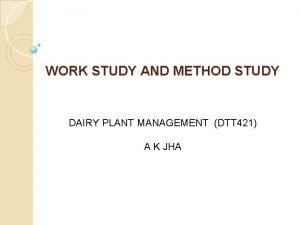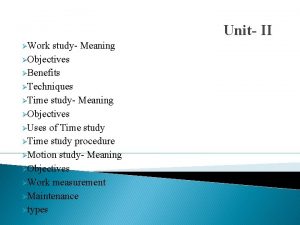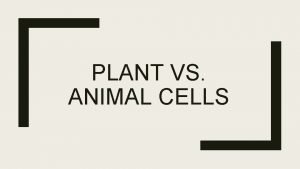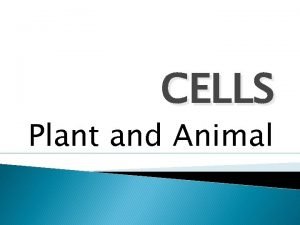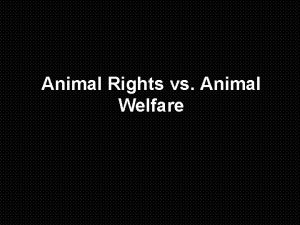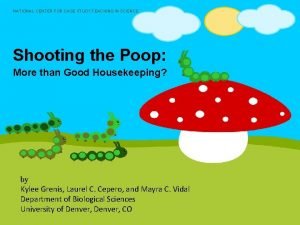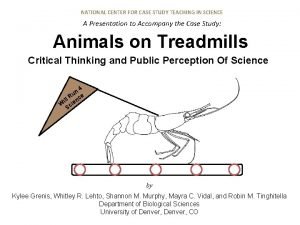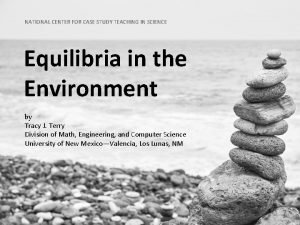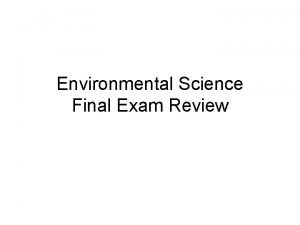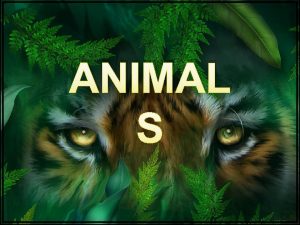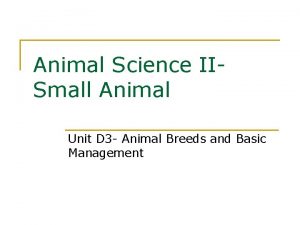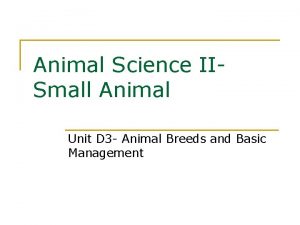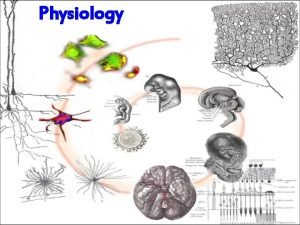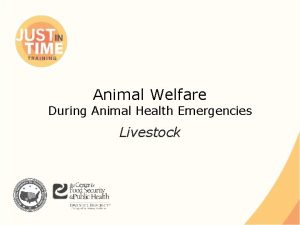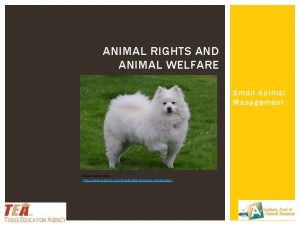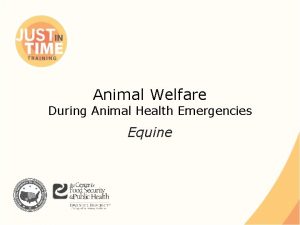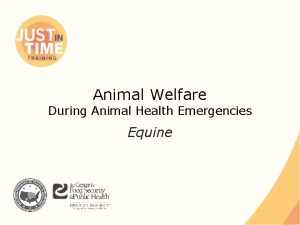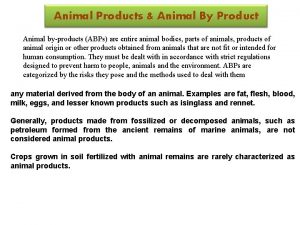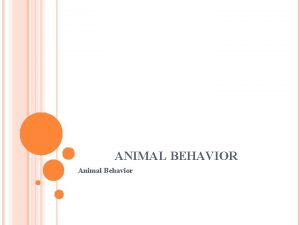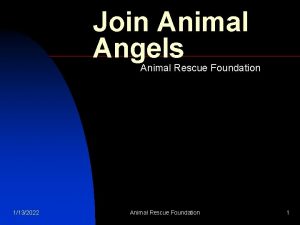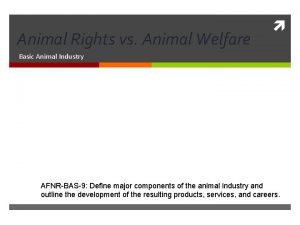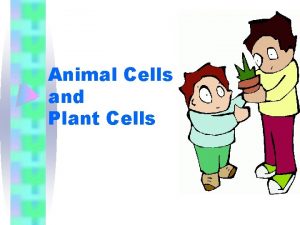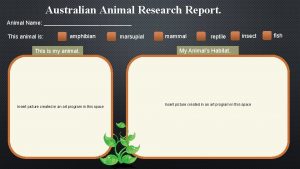ANIMAL SCIENCE WHAT IS ANIMAL SCIENCE Study of

















- Slides: 17

ANIMAL SCIENCE

WHAT IS ANIMAL SCIENCE? • Study of the principles of animal nutrition, physiology, genetics, health, behavior, products and production systems. • Why do we raise animals? - Enjoyment - Use / Work - To make money

Animal Industry? ? ? � All of the activities involved in raising animals and meeting the needs of the people for animals and animal uses � Livestock Are animals produced on farms and ranches for food or other purposes. Ex. Beef, Pork, Chicken, Turkey, Eggs Clothing (Wool)

RELATIVE CONTRIBUTION OF THE MAJOR MEAT SPECIES TO WORLD MEAT SUPPLIES.

PER CAPITA MEAT SUPPLY IN POUNDS, SELECTED COUNTRIES

Figure 2: US Red Meat and Poultry Production (Carcass Equivalent, Million Pounds)

Figure 3: US Net Exports of Red Meat and Poultry (Carcass Eqivalent, Million Pounds)

HOW DOES THE ANIMAL INDUSTRY IMPACT THE UNITED STATES FISCALLY ? - Agriculture is 17. 5% of the GNP in the United States. - The largest segment of the US economy - 50% Crops, 50% Animal Agriculture

Animal Terminology � Animal domestication – taking animals from nature and raising them in a controlled environment. ( taming wild animals – to be raised by humans) � Animal Selection – choosing animals to achieve desired goals. � Nutrition – the study of the kind food an animal eats and how it is used by the animal � Ration – the animals diet. What is consumed each day.

�Animals are classified and named by SPECIES, AGE, & SEXUAL CONDITION. �Neuteringare animals that are altered sexually �Why is this done? �Castrationthe removal of the testicles �Spayingremoval of the ovaries or cutting the fallopian tubes Animal Classification & Terminology

�Ask a Question – Describe a problem �Do Background Research �Construct a Hypothesis �Test Your Hypothesis by Doing an Experiment �Analyze Your Data and Draw a Conclusion �Communicate Your Results Scientific Method

CLASSIFICATION OF LIVESTOCK PAPER

• ANIMAL PHYSIOLOGY Internal functions and vital process of animals and their organs • 8 Categories 1. Skeletal System Bones which provides support for the body and protection of organs. 2. Muscular System – Provides movement in cooperation with skeletal system and to support life.

• ANIMAL PHYSIOLOGY There are two types of muscles A. Voluntary muscles- can be controlled by animals to do things such as walking B. Involuntary muscles – operate in the body without control by the will of the animal. 3. Circulatory System. Heart, veins arteries and lymph glands – these provide food, oxygen to cells of the body and filters waste materials from the body

ANIMAL 4. Respiratory System- PHYSIOLOGY Provides oxygen to the blood of the animal Allows for breathing through Nostrils, nasal cavity pharynx, larynx, trachea and lungs. 5. Nervous system. Central Nervous System – Spinal cord and brain – Coordinates movement and allows the sense of hearing, sight, smell, touch and taste Peripheral nervous System – controls body tissues including the organs transmits messages from brain to outer parts of the body

ANIMAL PHYSIOLOGY 6. Urinary system – Remove waste materials from the blood Parts include- kidneys, bladder and urethra 7. Endocrine System (Hormone system) – These are ductless glands that release hormones into the body Hormones – are chemicals that the body makes to regulate growth, reproduction, milk production, and breathing rate

ANIMAL PHYSIOLOGY 8. Digestive System – Provides food for the body and for all of its systems. This temporarily stores food for use b the body and removes the waste products from the body. - There are 3 basic types of digestive systems A. Ruminant B. Monogastric C. Poultry Animals on the farm can be classified as either ruminant and non ruminant.
 What is your favourite lesson
What is your favourite lesson What is case series
What is case series Retrospective cohort study
Retrospective cohort study Work study definition
Work study definition Marty lobdel
Marty lobdel Phytogeographical regions of india
Phytogeographical regions of india Objective of work study
Objective of work study Distinguish between time study and motion study
Distinguish between time study and motion study Venn diagram plant cell and animal cell
Venn diagram plant cell and animal cell Comparing animal and plant cells venn diagram
Comparing animal and plant cells venn diagram Similarities between animal rights and animal welfare
Similarities between animal rights and animal welfare Physical science jeopardy
Physical science jeopardy Physical science eoc practice test
Physical science eoc practice test National center for case study teaching in science
National center for case study teaching in science National center for case study teaching in science
National center for case study teaching in science National center for case study teaching in science
National center for case study teaching in science National center for case study teaching in science
National center for case study teaching in science Earth science final exam
Earth science final exam



